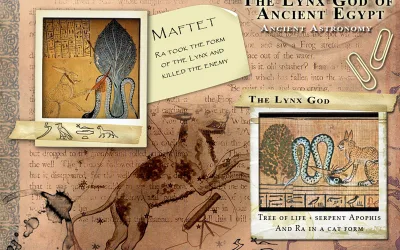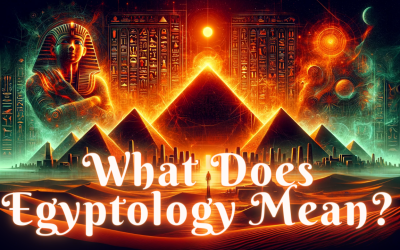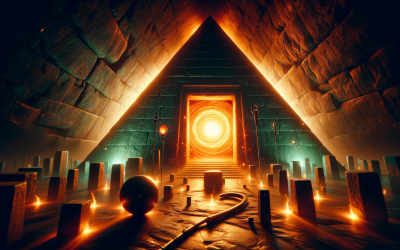Introduction — The Sand Whispers Again
In the heart of Egypt, beneath the golden breath of the desert, something ancient has stirred.
Not a tomb.
Not a shrine.
But a city—alive in its silence, preserved in clay, forgotten by time and remembered by chance.
The Lost City of Aten, long whispered about and doubted by many, rose from the sands near Luxor in 2021. What lay beneath had been untouched for over 3,000 years. Yet as walls emerged, still standing after millennia, they told stories not of kings and tombs—but of life. Ordinary, beautiful, vanished life.

Aten Revealed — The City Unearthed in Silence in Ancient Luxor
The discovery came during excavations west of Luxor, once the grand city of Thebes. Archaeologists expected a mortuary temple. What they uncovered was far more: streets of sun-baked bricks, winding between walls still standing shoulder-high. Pottery lay shattered but whole. Scarabs, tools, and jewelry sparkled in the dust.
This was Aten—a vibrant city from the time of Amenhotep III, father of the heretic king Akhenaten. It was here that life had blossomed before the religious upheaval of Amarna. And unlike many sites known only by stone and ruin, Aten had remained quietly intact, like Pompeii held in amber.
Some called it a miracle. Others, a time capsule.
But for those who walk there now, it is something else—a whisper of the living.

A City of Life, Not Death
Most stories of ancient Egypt come wrapped in the stillness of tombs.
But Aten is not a place of the dead. It is a place of bread ovens, of workshops, of laughter that echoes only faintly now.
Archaeologists have uncovered large residential quarters, administrative offices, and production centers filled with artifacts. Clay vessels stamped with the seals of Amenhotep III’s reign lay side by side with fishhooks, mallets, and rope.
Here were the homes of scribes. The kilns of potters. The footprints of people who shaped wood and carved stone—not for gods, but for one another.
This was the Egypt of the New Kingdom, not as told in monuments, but as lived by hands and hearts.
Timeline of the Lost City of Aten
| Year (Approx.) | Event |
|---|---|
| 1386 BCE | Amenhotep III ascends to the throne; Aten likely founded near Thebes |
| 1375 BCE | Aten flourishes as an industrial and administrative hub |
| 1353 BCE | Akhenaten begins his reign, introducing monotheism and building Amarna |
| ~1350 BCE | Aten is abandoned, possibly in political or religious transition |
| 2021 CE | Excavations near Luxor reveal the Lost City of Aten to the world |
The Shadow of Akhenaten — When Aten Became a Ghost
And then, the silence.
After Amenhotep’s reign, his son Akhenaten turned away from the gods of Egypt, establishing the monotheistic worship of the Aten—the sun disc. He abandoned Thebes and founded a new capital at Amarna.
Why then, was Aten—this once-busy city—left behind?
No steles tell its story. No records explain its abandonment. Some suggest political fracture. Others, religious revolt. Perhaps it was the echo of Akhenaten’s rebellion—a city turned ghost by decree.
But the sand does not lie. And what it kept hidden, it has now chosen to show.

Time Paused in Clay — Architecture and Traces of Purpose
The mudbrick walls of Aten stand up to 3 meters high, a rare survival in Egypt’s harsh climate. Streets divide the city like arteries, and courtyards open like breaths. Doorways still arch where people once stood.
One room revealed a group of pottery vessels, still filled with pigment. Another, a workshop with casting molds. There were burial areas nearby—not tombs, but simple graves for those who had lived and died in this city of light.
This isn’t the Egypt of towering statues or hidden tombs. It is the Egypt of scent and sun, of people who lived by firelight and discipline, their routines pressed into clay by time.
Why It Was Forgotten — Power, Faith, and Sand
Why did no one speak of Aten?
Perhaps its silence was intentional.
After Akhenaten’s death, Egypt’s rulers returned to older gods. His new religion was erased, his city at Amarna abandoned, and perhaps Aten—bearing the name of the forbidden sun god—was quietly buried by memory.
This forgetting was not just historical. It was spiritual.
But the desert, as always, remembers. And now, Aten rises again—not in faith, but in fragments. Not to rule, but to be understood.

Final Thoughts — Memory, Sand, and the Things We Almost Lost
There’s a feeling, walking in places like Aten.
Not awe. Not reverence. But recognition.
Of pots left half-filled. Of sandals near a doorway. Of the sun casting long shadows on streets once alive.
This city does not glorify power—it reveals presence.
Aten was not a monument to eternity. It was the heartbeat of the living. It is now the ghost of conversations, routines, and meals long finished.
And perhaps that is the real power of archaeology—not that it reveals the past,
but that it reminds us the past never truly left.
You can read more about ‘Lost golden city’ found in Egypt reveals lives of ancient pharaohs here.
🙋♀️ Frequently Asked Questions (FAQ)
Q: What is the Lost City of Aten?
A: It is a 3,400-year-old city discovered in 2021 near Luxor, Egypt, dating to the reign of Amenhotep III. It is one of the most significant finds in modern Egyptian archaeology.
Q: Why is it called Egypt’s ‘Pompeii’?
A: Because it is remarkably well-preserved, offering a vivid snapshot of everyday life during the New Kingdom, similar to how Pompeii preserved Roman life.
Q: Was the city related to Akhenaten?
A: Yes. Though founded by Amenhotep III, it was likely still active in the early years of Akhenaten, who later abandoned it during his religious reforms.
Q: Can people visit Aten today?
A: Not yet as a public site, but future development may allow guided tours once excavations and preservation efforts advance.
✨ Love uncovering ancient secrets? Then you might like The Amazing Crypt Underneath Dendera Temple
Subscribe for more myth-rich discoveries, and share this story with someone who believes the sand still speaks.
🧭 Planning a trip to Luxor?
Ask your guide about Aten and be part of the rising conversation surrounding this forgotten city.



